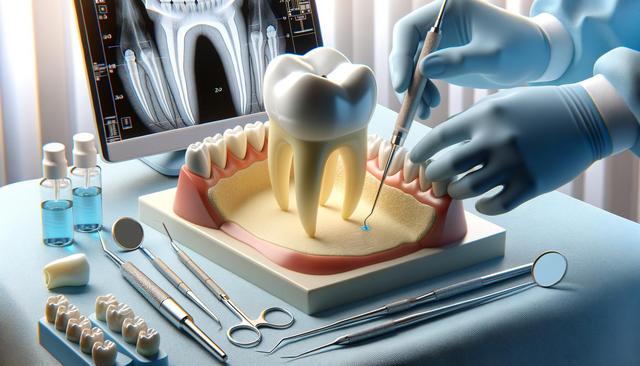Understanding the Need for Root Canal Treatment
When tooth pain becomes persistent or severe, it may indicate an infection deep within the tooth’s pulp. This is where a Root Canal becomes a necessary procedure. The pulp, which contains nerves and blood vessels, can become inflamed or infected due to deep decay, repeated dental procedures, or trauma. Left untreated, this condition can lead to abscesses or even tooth loss. Root Canal Treatment is designed to eliminate the infection, relieve pain, and preserve the natural tooth structure. Many people mistakenly believe that extraction is the only solution for a severely damaged tooth, but in fact, a Root Canal offers a reliable alternative that maintains your dental function and appearance.
Some common signs that a Root Canal may be needed include:
- Lingering tooth sensitivity to hot or cold
- Sharp or throbbing pain when chewing
- Swelling or tenderness in nearby gums
- Darkening of the tooth
Recognizing these symptoms early and consulting with a dental professional can help you address the issue before it worsens.
What Happens During a Root Canal Procedure?
A Root Canal Treatment typically involves several steps, all aimed at removing the infected or inflamed pulp and sealing the tooth to prevent further damage. The procedure is usually performed under local anesthesia, ensuring comfort throughout the process. After numbing the area, the dentist will create a small opening in the crown of the tooth to access the pulp chamber. Using specialized instruments, the damaged pulp is removed and the canals are carefully cleaned and shaped.
Once the area is cleaned, it is disinfected and filled with a biocompatible material, usually a rubber-like substance called gutta-percha. The tooth is then sealed, and in most cases, a crown is placed to restore strength and function. The entire Root Canal{state} process may take one or more visits depending on the complexity of the case. With proper care, a tooth that has undergone Root Canal Treatment can last just as long as any other natural tooth.
Benefits of Preserving the Natural Tooth
One of the key advantages of a Root Canal is that it allows you to keep your natural tooth, which plays an important role in maintaining overall oral health. When a tooth is extracted, it can lead to a number of complications such as shifting of adjacent teeth, bone loss in the jaw, and increased risk of further dental problems. Root Canal Treatment helps avoid these issues while also:
- Maintaining natural bite and chewing efficiency
- Preventing uneven wear on surrounding teeth
- Preserving the aesthetics of your smile
- Reducing the need for more invasive procedures like implants or bridges
Choosing a Root Canal over extraction is often a more conservative and cost-effective approach in the long term.
Recovery and Aftercare
Post-treatment care is essential for a successful recovery following a Root Canal. Some discomfort or sensitivity is normal for a few days after the procedure, especially if there was pain or infection before treatment. Over-the-counter pain relievers are typically sufficient to manage any mild discomfort. It’s important to follow your dentist’s instructions, which may include avoiding hard or crunchy foods until a permanent crown is placed.
Good oral hygiene practices are crucial to maintain the health of the treated tooth and surrounding gums. This includes:
- Brushing and flossing daily
- Using an antiseptic mouth rinse if recommended
- Attending regular dental checkups and cleanings
With proper care, your Root Canal{state} will heal effectively, and the restored tooth can function normally for many years.
When to Consult a Dental Specialist
Not all dental pain requires a Root Canal, but when symptoms suggest deep infection or pulp damage, timely intervention is key. A general dentist can often perform Root Canal Treatment, but in more complex cases, you may be referred to an endodontist—a specialist in treating the inside of teeth. Factors such as the location of the tooth, the shape of the root canals, and the severity of the infection can influence whether specialized care is needed.
Seeking professional evaluation as soon as symptoms arise can prevent complications and increase the likelihood of a successful outcome. Whether you’re experiencing discomfort or have been told you need a Root Canal{state}, understanding the procedure and knowing your options can help you make informed decisions about your oral health.
Conclusion: Taking Control of Your Dental Health
Root Canal Treatment is a valuable procedure that can save your natural tooth and eliminate ongoing dental pain. By addressing infection at its source, it restores function while supporting long-term oral health. If you’re experiencing symptoms that may indicate the need for a Root Canal, don’t delay in seeking professional advice. With modern techniques and proper aftercare, a Root Canal can be a comfortable and effective solution for preserving your smile.


Leave a Reply